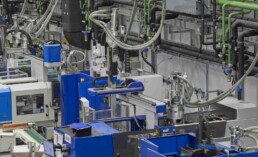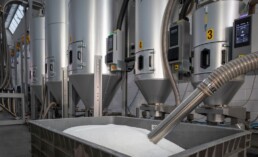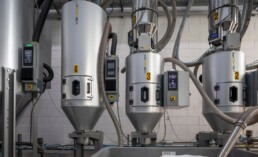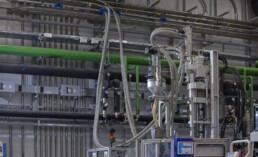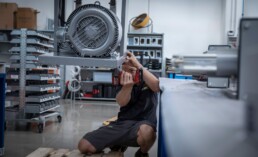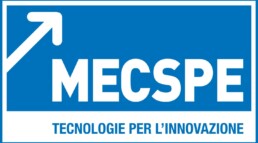The new Vismec supervisor: better plant control with OPC UA protocol
Today, we are presenting one of the latest Vismec technological developments: the new supervisor integrated with the OPC UA protocol. Thanks to the introduction of Industry 4.0 elements, the device allows for better and more comprehensive plant monitoring. In this article, we will delve into what it is, outlining its purposes and general operating principles. Then, we will focus on the more technical aspects, highlighting the improvements offered over previous solutions.
The new Vismec supervisor with OPC UA protocol: why we have developed it
The aim of the new device is to enhance the control and monitoring the capabilities of the various components of the installed plants, as well as the interoperability of different machines. The project was developed to more effectively address certain organisational and operational needs, including the overall verification of plant operation, the visualisation of relevant data, and the identification of any anomalies. Thanks to the new supervisor, and in particular the presence of the OPC UA protocol, it is possible to:
- remotely verify the correct operation of plants and their components, allowing for more targeted interventions when necessary;
- manage access and permissions for each operator who administers, defines, or adjusts machine settings, based on their role and functions;
- improve the connection between the centralised Vismec control system and external software interacting with the machines within the production layout and management system.
The last function mentioned, for instance, can be useful for connecting the Vismec system with a management software used by a client company, through an interface that allows for the visualisation of selected variables of the installed machines. This innovation is made possible by the OPC UA Server added to the new supervisor.
At the core of these mechanisms is a paradigm shift that represents one of the most significant evolutions in the newly introduced supervisor. In fact, the device’s programming logic shifts from a functional approach to an object-oriented approach. What does it mean? To better understand it, we first need to define what a "software object" is.
A "software object" is a fundamental concept in object-oriented programming (OOP). This paradigm is based on the idea of organising computer code into "objects," understood as structures that combine data and functions, and that can be used to represent real-world entities or abstract concepts within a program.
Here are the key characteristics of a software object that help us understand the functioning of the new Vismec supervisor based on OPC UA protocols.
- Attributes (or features). These are variables that contain information about the object's state. For example, in an object representing a person, the attributes might include name, age, address, etc.
- Methods. These are functions associated with the object and define its behaviour. For example, a "person" object might have methods like "walk," "talk," "eat," etc.
- Encapsulation. Objects hide the details of their internal implementation from external users, allowing access only through so-called public methods. This principle helps protect data, a key function in OPC UA protocols, and reduce code complexity.
Thanks to programming according to this logic, the new supervisor allows software objects to interact with each other through message exchanges: for example, transferring data for processing and subsequently receiving the result of their processing. This mechanism translates into better interoperability between software, machinery and users, making plant monitoring more comprehensive and integrated.
Improvements over previous monitoring systems
After this technical-methodological overview, we now present in more detail the various functions of the device and the main differences compared to the systems previously used to control the granule conveying, drying, and dosing plants installed at client sites.
We want to focus particularly on the operational advantages that plastic processing companies can benefit from, thanks to the new supervisor. Here are the main ones:
- improved hardware;
- simplified graphics to immediately highlight the main variables to be monitored, related to each plant component;
- generalised evaluation of the state of each machine in the plant: not only abnormal states are monitored but also normal ones, each associated with a colour code;
- improved alarm system to precisely identify the presence of anomalies, link them to the machine that registered them, and provide additional information such as their location and the time they occurred;
- better interface connection between the centralised Vismec management system and the software used at the client’s site: we already discussed this aspect in the previous paragraph.
Our company is already working on further developments that will make the Vismec supervisor even more complete and integrated. Want to know how the new device can improve your company's performance in terms of organisation, monitoring, and intervention? Contact our team: we are at your disposal.
A Vismec case study: solutions to the problem of dust in plastic granules
The presence of dust in plastic granules used as raw material in injection moulding can become a significant problem, especially in the production of objects, elements and components that must be perfect in their appearance.
In this article, we are presenting a case study we faced recently.
The client's request: dust removal from plastic granules
The customer who asked for our intervention operates in the plastic processing sector and, specifically, in injection moulding. It is a well established company, with a machine park that includes around 50 presses
In addition to the development and production of moulds, the company also supports customers in the production and assembly of high-quality plastic components in the following sectors:
- domotics,
- medical,
- automotive,
- water treatment.
Regarding the topic of this case study, the company had to cope with a dust problem in plastic granules. The incident occurred during the production of an aesthetic component on behalf of a multinational company operating in the household appliances sector.
Following a problem in the production line, the plastic granule supplier often sent batches of material containing a high amount of dust to our moulding company. The dustiness of the raw granule led to a sharp increase in the percentage of rejected parts, due to inclusions and streaks affecting its aesthetic quality and precluding its use.
As mentioned at the beginning, the presence of dust in plastic granules used as raw material for injection moulding can negatively affect the aesthetic performance of the finished product in several different ways.
- Surface defects such as scratches, spots, or stains. These occur because the powder does not blend uniformly with the plastic material during the moulding process, creating imperfections on the product surface.
- Non-uniform colouring. Powder can affect the correct distribution of pigments or dyes in the plastic material. This can lead to colour variations or stains.
- Finishing problems. Dust in plastic granules can prevent a proper finish. For example, it can make it difficult to achieve a glossy surface or a specific texture, as the dust particles interfere with the surface structure during melting and solidification.
- Burn marks. During the moulding process, the powder may overheat, leaving dark or burnt traces, particularly evident on light-coloured or transparent objects.
- Inclusions and bubbles. The powder can trap air or other contaminants, creating inclusions or bubbles in the plastic material that are also visible on the surface.
- Increased roughness. Dust particles can increase the surface roughness of the finished product, affecting its appearance, touch and in some cases its functional properties.
To avoid situations such as those described, it is important that plastic granules are free of dust and other contaminants. However, as we will see in the next section, the machinery installed did not allow the company we are talking about to solve the dust problem.
The Vismec solution: a tailor-made dust removal plant
In fact, the feeders used by the moulding company and supplied by one of our competitors could not remove the dust from the granules. These feeders were installed all along the material handling cycle: some single-phase with a fabric filter and one three-phase with a ground cartridge filter.
The company tried to solve the problem manually by combining a sieve with a domestic hoover to remove dust from the virgin material before drying. Although this solution improved the situation, it failed in bringing the waste percentage below the required minimum values and resulted in significant loss of time for the operators.
Consequently, Vismec proposed to the customer a specially designed solution consisting of:
- a side channel blower, model VB 31, with a DR2 three-sector cyclone filter.
- a granule conveying management and control system with four QUAD stations and four VR4 material receivers.
With the supplied machinery, the customer created a material handling chain that includes:
BAG → STORAGE CONTAINER #1 → STORAGE CONTAINER #2 → DEHUMIDIFIER → PRESS
The organisation of such a supply chain has ensured an effective dust removal from the material and a drop in the incidence of waste to normal levels.
As you can see in this case study, Vismec technical and sales team works to offer clients the most effective response to the challenges they face. If your company is also looking for a partner to solve a problem or critical situation in your sector, contact us: we will study the best solution together with you.
Dew point meter: why to use it
The dew point meter is a device for measuring and monitoring the dew point of the outgoing air in polymer dehumidification systems. These measurements help to ensure the effective dehumidification of plastic granules, ensuring the good quality of the finished product resulting from the plastics processing.
In this article we are going to have a closer look at what a dew point meter is and how it operates. Then we will present the features and advantages of dew point meters designed and manufactured by Vismec.
Dew point meter: what it is and how it works
When drying polymers, especially in the case of technical polymers, it is important to check the functionality and performance level of the drying system.
As we have already explained, residual moisture can be present in the granules used as a raw material for plastic processing, and it can generate serious flaws in the finished products, compromising their mechanical properties and aesthetic characteristics.
The dew point meter is a helpful tool to measure the dew point. Simply put, dew point is the temperature at which the air reaches saturation and water vapour condenses into liquid form. Consequently, in several industrial applications, knowing the dew point is useful to maintain optimal drying conditions, especially when handling moisture-sensitive materials such as plastic granules.
The operation of the dew point meter exploits precise physical principles and relies on several integrated technologies. The measuring process involves various steps. Let’s see them all.
- Temperature and humidity measurement. The various unit sensors detect the amount of water vapour present and the temperature of the air leaving the dehumidifier at a specific time.
- Dew point calculation. Using specific formulas and algorithms, the tool calculates the temperature at which the moisture in the air condenses, that is, the dew point.
- Data visualisation. The data are shown on a digital display to allow real-time monitoring.
- Process control. The most advanced dew point meters integrate into industrial process control systems, allowing automatic settings to maintain optimal dehumidification conditions.
As we said at the beginning, measuring the dew point value allows monitoring the performance of the drying system. This value can be checked in the following ways.
- Under working conditions. In this case, the dehumidifier works regularly, as part of a real drying process of the plastic granules. The measurements taken allow controlling both the efficiency of the dehumidifier and the effectiveness of the drying process.
- Vacuum, to check the efficiency of the dehumidifier only.
But a single measurement is not enough for a complete check. It is necessary to measure over an extended period of time to define the humidity trend over several hours, sometimes several days.
Furthermore, the type of dehumidifier influences the duration of the measurement considerably. With VISMEC dehumidifiers, control is simple, because our machines operate smoothly and consistently: as a result, the measurement quickly shows the true dew point value, and it will not deteriorate with time.
Vismec portable dew point meter
A Vismec portable dew point meter can be used with the different types of dehumidifiers that our company designs and manufactures. Available with various power systems, it ensures versatility and ease of reading.
The logger plotted on the screen has an adjustable width and allows viewing the trend of the parameters over a desired, longer or shorter period of time. It is also possible to save the collected data on a USB flash drive for various uses: for example, documents filing in accordance with the company's quality management system.
Listed below, the main technical characteristics of the dew point meter offered by our company:
- device equipped with an integrated volumetric suction pump to ensure a correct and constant sampling flow;
- connection to the dehumidifier via Teflon monotube;
- great versatility, that is, the portable dew point meter is also suitable for small or pneumatic dehumidifiers;
- large 7’ touchscreen that makes it easy to read the data, thanks to its sharpness and illumination;
- available in rechargeable battery-powered version with integrated battery charger, or without batteries with direct power supply;
- user-friendly graphic user interface in six languages;
- settable dew point limit and sampling rate;
- data collection record with possible on-screen verification;
- USB port for downloading data and software updates;
- total auto switch-off in case of low batteries and “battery safe” system to keep them efficient.
Effective plastic granule drying is crucial to ensure quality to the products your plastics processing company offers. In this context, Vismec portable dew point meter is a reliable, advanced and functional device that allows an accurate monitoring of the performance of installed dehumidifiers.
Want to know more? Contact our team.
Vismec at PLASTPOL 2024, plastics and rubber processing trade fair in Kielce, Poland
From 21 to 24 May 2024, Vismec is exhibiting at PLASTPOL 2024, the international plastics and rubber processing exhibition in Kielce, Poland.
PLASTPOL Expo is Central and Eastern Europe's most important event for the industry. Six hundred companies from all over the world will present their innovative solutions for the plastics industry.
Vismec will be present at the event at the stand of our Polish partner Kanitec. Come and visit us: we are waiting for you at HALL E, STAND E25 - E26.
Vismec at FIP 2024, the international showcase in the plastics industry in Lyon
From 4 to 7 June 2024 Vismec will be at FIP - France Innovation Plasturgie: the event will be held in Lyon, France.
The trade fair is one of the most important international showcases for companies in the plastics industry.
This year, the focus will be on the sector's energy, regulatory and environmental challenges: an opportunity to highlight the advanced energy-efficient solutions that our company offers.
Visit us at the Eurexpo complex in Lyon: we look forward to seeing you at stand 105-H32.
Big bag emptying stations for industrial granule storage: Vismec solutions
In this article, we are going to introduce big bag emptying devices used in the industrial storage of granular materials.We will start by explaining what a big bag emptier is and what its function is. Then, we will focus on the role of these devices in the transport and storage of plastic granules, and we will present Viper, the latest solution by Vismec in this sector.
Big bag emptying solutions: what they are and what they are used for
Big bag emptier series are equipment that companies use in operations involving the transfer and industrial storage of bulk materials, such as plastic granules. But what structure do these devices have, and how do they work?
A big bag emptier, as its name suggests, is a machine designed to efficiently empty flexible containers commonly known as “big bags”. These are precisely large containers companies use for storing powders, granules or more compact materials.
Keep their contents safe and controlled is important, especially in industries that require the transfer of large quantities of bulk material. The plastics processing industry is among the sectors needing this care, in which it is essential to properly store, handle and transfer plastic granules during the production process. Here the big bag unloaders come into play.
The operation of the big bag emptier is based on a mechanism that allows lifting the big bag and empty its contents in a controlled way. This process takes place through the use of conveying systems that regulate the flow of the granules, ensuring an accurate and waste-free transfer.
The careful design of the big-bag emptying stations allows their structure and operating mechanisms to the specific needs of the companies. Vismec manufactures the big bag emptying stations according to these criteria, to ensure an efficient operation and optimal material management, as well as maximum flexibility.
In the next section, we will go further into the operation of big bag emptying stations for the storage of plastic granules. We will look at the main elements of these devices and present Viper, our company's latest solution.
Big bag emptying stations in the storage of plastic granules
Big bag emptying stations consist of several components that work together to perform the emptying process accurately and safely. Here are the main ones.
- Lifting and support system designed to lift the big bag into a vertical position.
- The big bag is placed on a stable support platform equipped with locking devices to ensure that it remains firmly in place during the emptying process.
- Opening and unloading system to open the bottom or neck of the big bag in a controlled way, allowing the plastic granules to flow evenly and regulated to the conveyor system below. Different technologies used to open the big bag include cutting devices, butterfly valve systems controlled by electric or pneumatic motors.
- Conveying system that regulates the movement of plastic granules from the big bag to the desired destination points, which may include feed hoppers or other transfer units.
All these features are particularly advanced in Viper, Vismec new big bag emptying device. Viper is designed and manufactured to empty big bags, boxes or Octabin containers. It can be used to handle solid plastic material in the form of granules with a size of about 2 / 5 mm.
Here are its main technical features:
- fixed painted carbon steel gantry-shaped frame;
- carbon steel mobile carriage;
- stainless steel moving probe to detect the material level in the big bag;
- stainless steel vacuum pipe to activate the plastic granules pneumatic conveying process.

Viper allows big bags or Octabin containers to be emptied automatically, thanks to a vacuum unit consisting of a receiver and a vacuum generator, connected to the vacuum inlet pipe itself.
The machine is designed to empty containers with a capacity of 1500 kg or more, of variable shape and size. Thanks to proper customisations and special probes, upon request, Viper can also be used to handle other types of solid materials such as regrind or powders.
During the conveying process, it is essential to monitor the granule flow to avoid overloads or interruptions. That’s why the parameter regulation is very important to ensure an efficient performance and must be carried out at any change of materials, containers and bags.
This is why the Viper big bag emptying station is equipped with a PLC control system that allows you to control and modify the operation settings without stopping the machine. Controllable elements include, for example, the settings of mobile carriage parameters, probe parameters, activation of the automatic vibrator.
Therefore, choosing Vismec big bag emptiers means having access to machines that can be precisely controlled, ensuring that operations are managed efficiently, saving time and avoiding downtime and material waste.
Want to know more? Contact our staff.
Dust collector for plastic granules: what it is, how it works, Vismec solutions
The industrial dust collector is one of the technologies used by the plastics industry to ensure efficient production processes and quality results. Dust collectors help both to optimise processing and preserve the characteristics of the plastic granules used as raw material.
In this article, we are going to describe the general operation of a dust collector, focusing on its role in granule conveying and treatment processes. In addition, we will talk about the Vismec dust collectors for plastic granules, their characteristics and advantages for companies.
Dust collector: what is it?
An industrial dust collector is generally a device designed to remove dust particles, residues and other impurities from a variety of materials.
Such materials also include plastic granules. As we said, the presence of dust and other impurities can compromise the quality of the granules and negatively affect the processing result. In other words, residual dust on the granules can cause serious quality problems in the final product, which, for example, may show black spots or flow lines.
Having explained the role of a dust collector in production processes, let us now present its basic operation.
- Material is introduced into the dust collector through a conveyor system.
- The material is exposed to a controlled air flow. Depending on the characteristics of the dust collector, this flow can be combined with the mechanical action of vibrations or centrifugal forces. However, as we will see in the next section, Vismec dust collectors use an alternative and more effective method, in which the presence of compressed air is limited or absent, and the dust removing action implemented by means of static electricity.
- These processes separate dust particles and other impurities from the plastic granules. As a result, the material is ready to be used in various plastic processes.
Besides preserving material quality, the dust collector helps to reduce downtime, lower operating costs and increase productivity and efficiency.
The effectiveness of a dust collector for plastic granules depends on several factors, including the design of the device, the used dedusting system, and the nature of the impurities. Consequently, the careful design of the dust collector with specific technical measures, allows the desired results in terms of quality to be achieved.
In the next section we are going to present in detail the dust collectors offered by Vismec, their features and benefits.
Vismec dust collectors for plastic granules
The dust collectors we offer to plastics processors are designed to guarantee process efficiency and the highest quality result. The operating process we have described takes on specific characteristics in Vismec dust collectors.
In particular, the AIR version, which represents the latest generation of dust collectors, operates as follows:
- in the material supply, virgin or regrind material is conveyed to the dedusting unit;
- the non-contact type air paddle, without contact between the air stream and the granules, conveys a certain amount of material in combination with the sensor signal;
- the high-pressure applied ioniser regulates the static electricity charged in the materials by bringing it below a certain voltage;
- the air amplifier generates a vacuum by emitting a small amount of compressed air; so the force of this vacuum attracts outside air, forming a vortex in the duct;
- the damper (air filler) lowers the vacuum in the duct, supplying outside air, to prevent materials from being easily discharged; it comes into operation when small, light materials are used;
- the light dust contained in the material is separated from the rising air stream.
The dust collector is part of the conveying processes of plastic granules and helps to maintain their effectiveness.
This can be better explained by considering that this type of machinery must always be placed directly on the press in order to obtain a completely dust-free material. In fact, a further conveying of material could generate new residues: the direct installation on the press, on the other hand, preserves the plastic granule from the risk of other contaminations.
As mentioned, one of the most noticeable features of the dust collectors offered by Vismec is the use of static electricity to remove dust from the material, strongly limiting the action of compressed air. Being able to totally remove particles and residues from the granules, a better performance is achieved.
In the air type model, as we have seen above, a small amount of compressed air is still injected into the supply pipes to generate the pneumatic vacuum that enables the granule conveying to start. However, in order to avoid any contamination, even in this case there is no contact between the compressed air and the dedusted material.
Guaranteeing the complete absence of dust in the polymer at the end of the process, our dust collectors are particularly suitable for advanced or high-tech production sectors. These include, for example, the medical sector, the production of spectacle and contact lenses, or optical covers, the consumer electronics sector, such as electronic housings or similar.
Would you like to find out more and learn more about what our dust collectors can offer to your company? Contact the Vismec team!
Vismec at NPE 2024, the world's largest plastics trade show
From May 6-10, 2024, Vismec will be at NPE 2024, the world's largest trade show dedicated to the plastics industry. The event has always had a specific focus on innovation and will be held in Orlando, Florida, at the Orange County Convention Center.
The NPE show is held every three years and has become a must-attend event for companies in the industry: more than 2,000 companies will participate in this edition.
Vismec will take the opportunity to present the most innovative of its products. It will also be an opportunity to let industry professionals know more about the activities of our evolving U.S. headquarters.
Come visit us at the Orange County Convention Center: we look forward to seeing you at BOOTH booth S22089!
The cyclone filter in Vismec centralised conveying systems
The cyclone filter is one of the key components in vacuum conveying systems for plastic granules. Its function in Vismec conveying systems, combined with the blower or hook pumps, allows to effectively and efficiently manage the flow of granules while preserving the quality of the material.
In this section we are going to present the characteristics of the cyclone filter in more detail, and then we will focus on the specific features of the filters proposed by Vismec for centralised plastic granule conveying systems.
Cyclone filter: function in granule conveying systems
The cyclone filter and side channel blowers are complementary elements in conveying systems. We have already seen it in the article dedicated to the different types of granule conveying systems and in the presentation of Vismec products for conveying. Now we are going to have a closer look at this topic, focusing on the cyclonic filter.
A vacuum conveying unit works by generating a pneumatic vacuum using side channel blowers or hook pumps. The cyclonic filter integrates the action of these devices, keeping the air flow clean and preserving the quality of the plastic material.
Let’s see in more detail.
- Side channel blowers compress the air and generate a negative pressure. The conveying system exploits the pressure difference to convey and suck the plastic granules in, throughout the ducts of the feeding system. Usually, side channel blowers are suitable for applications where a moderately high pressure is required.
- Hook pumps, as an alternative to blowers, generate a vacuum using the action of rotating lobes. They can handle heavier materials and produce a higher pressure, so they are used in situations requiring higher suction power.
- The cyclonic filter is used to separate solid particles such as dust or plastic granules waste from the sucked air stream.
The special design of the system, as we have seen in a previous article dedicated to the cyclonic filter, exploits centrifugal force to separate heavier particles from the air stream. This helps prevent the accumulation of debris and impurities, ensuring a more efficient operation.
In the next paragraph, we will present in detail the functions and technical features of Vismec cyclonic filters in the centralised conveying systems that our company designs and manufactures.
The cyclone filter in Vismec centralised conveying systems
The cyclone filter is a key element in the operation of Vismec centralised conveying systems. In fact, its action makes the process more efficient and keeps the plant clean and fully functional, helping to extend its operational life. It also helps to safeguard the quality of the transported granule.
The three-sector filter system guarantees an optimal process outcome.
Depending on the customers needs, the cyclonic filter can be used in different options, which we will examine below.
- It can also be supplied in a double version, with manual or automatic switch. The double switch is used to avoid downtime or loss of production, e.g. when the filter is clogged or during maintenance operations.
- It also provides for a Softstart or Inverter options: both systems are designed to save energy, increase the life of the system, and avoid powder or “angel hair” formation thanks to the possibility of controlling the conveying speed. In particular, the Softstart mechanism provides for a gradual start of the vacuum unit, with less energy consumption during starting phase.
- In case of high temperatures materials conveying, it can be supported by a special cooling mechanism that protects structure and functions of the vacuum unit.
A pressure switch is also available as an accessory for the filter: the instrument monitors the internal pressure and prevents clogging.
Vismec cyclone filters can also be supplied in a stand-alone configuration. In this case, the side-channel blower is also presented as a separate device, notwithstanding the functional integration between the two elements of the vacuum unit. Furthermore, on request, the conveyor system can be equipped with a back-up blower, which further contributes to maintaining operational efficiency.
As previously mentioned, depending on the needs of the companies and the characteristics of the conveying process, the technical requirements of the blowers, which are available in single, dual or triple stage configurations, also vary. For long-distance conveying systems requiring higher productivity, side blowers can be replaced by hook pumps if necessary.
Do you want to know all the advantages that our granule conveying systems offers to plastics processors? Contact us: our technical team is always available for you.
Vismec at MECSPE 2024, the International Fair for the Manufacturing Industry
From 6 to 8 March 2024 Vismec will be at MECSPE, the International Fair for the Manufacturing Industry. The event will be held as usual in Bologna and has reached its 22nd edition this year.
Come and visit us at Hall 36, Stand E18!
Vismec products at MECSPE 2024
This year we will bring some of our flagship products for the dehumidification and conveying of plastic granules to the fair. In particular, visitors will be able to get to know:
- Drycube, a flexible and independent wheel dryer. Drycube combines the efficiency of a rotor dehumidifier with an integrated pneumatic conveying system, a dehumidification hopper receiver, an IMM receiver and all related accessories. Advanced and efficient, it allows automatic setting of the dehumidification process parameters.
- Venturi feeder, a feeding system for transporting materials such as master batches or granulated additives. Compact and completely made of stainless steel with a cast body, it allows the conveying of granules in a continuous flow with the possibility of adapting the air power through a pressure regulator.
- FW 50 Touch control system. It manages up to 48 transport stations per empty line with possible emergency reserve system. FW50 is integrated with the universal OPC UA interface, for automatic and efficient supervision of the production system. Also available in touchscreen version with remote control
Would you like to know more? Come and visit the Vismec stand: Hall 36, Stand E18!
